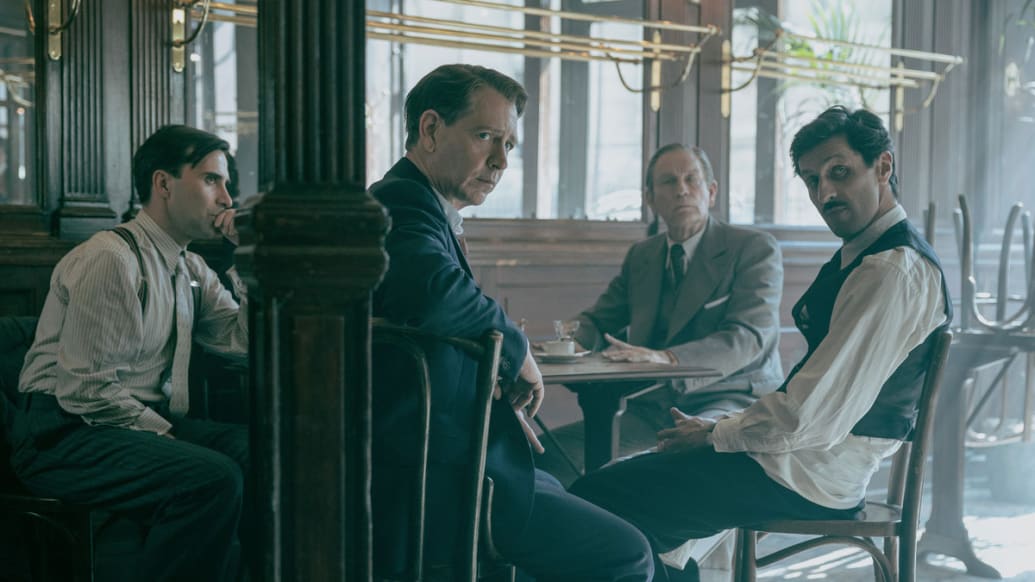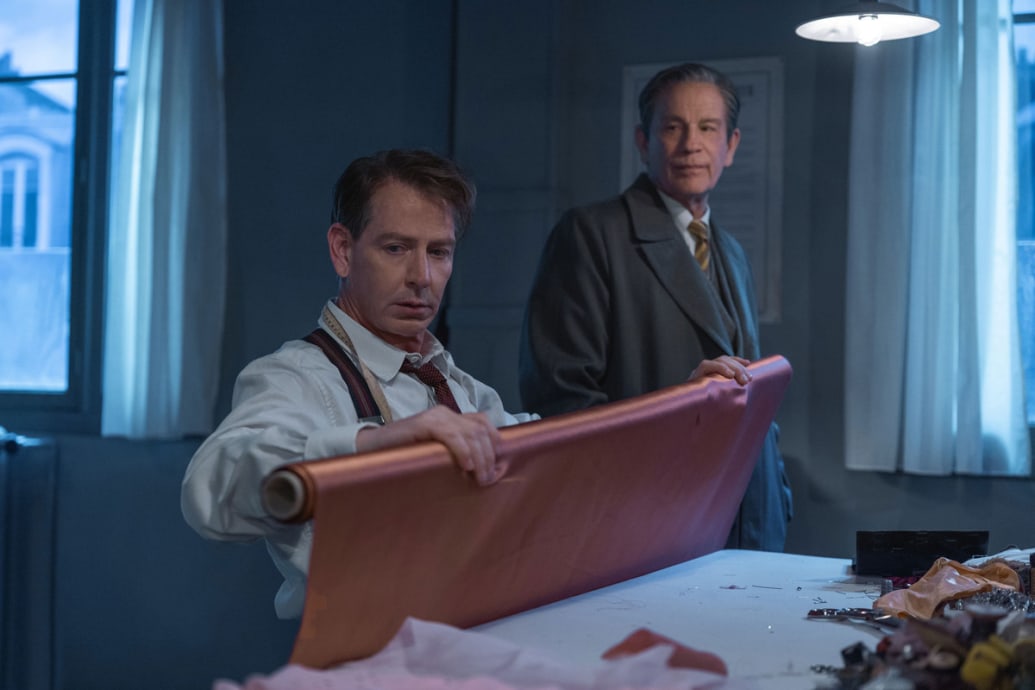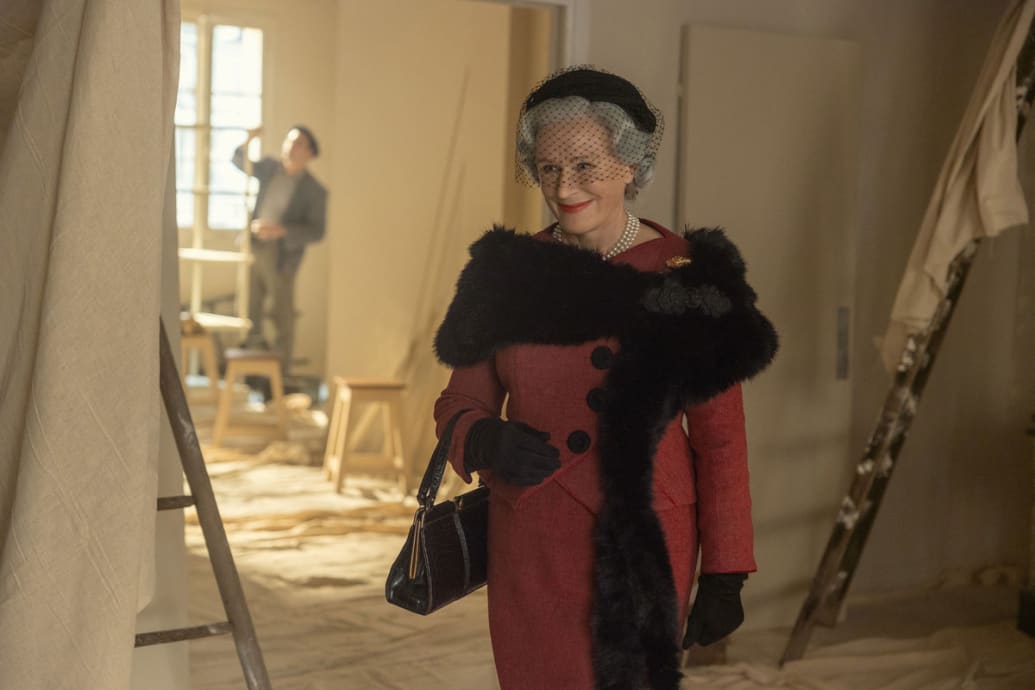‘The Original Behold’ Commits a Predominant Style Faux Pas – Google

The phrase “fashion over substance” has change into a pejorative, relating to one thing that prioritizes the potential it looks and feels over the message it’s attempting to utter. However it shouldn’t withhold the sort of adversarial connotation—in fact that among the correct motion images and television exhibits unpleasant design in the starting up, and permit the parable to snatch a backseat to let the ambiance enact the talking.
The Original Behold, essentially the most up-to-date sequence from Apple TV+ (streaming Feb. 14), is no longer a form of exhibits.
Named for the moniker given to Christian Dior’s revolutionary Spring/Summer season 1947 couture assortment—the converse is absolutely standard, with its lovely costumes and spruce direction accurately surroundings the scene in pre-and-put up-war Paris. However when it involves any more or much less substantive significance, the sequence is as stiff as a boned corset. Episodes creep previous with a languid ride, rarely declaring their significance beyond the scant thrills that advance from staring at capital-A actors enact their jobs. And despite the incontrovertible truth that it’s properly sublime, the sequence makes glaring blunders when stitching together its final create. The Original Behold is an racy exercise in squandered promise, lacking all of the glamor and lovely-tailoring that its conception requires.

Apple TV+
Opening in 1955 and slowly working its potential backward to issue Dior’s memoir, The Original Behold proposes a original ask: What if someone whose title is synonymous with sophistication had a deeply repulsive facet? That’s the phenomenon that the sequence is unafraid to bore into, exploring the dissonance between public perception and staunch historical previous amongst Dior (Ben Mendelsohn) and his contemporaries, severely Coco Chanel (Juliette Binoche). Chanel is remembered as the girl who made French vogue the worldwide approved, someone whose peep for design preceded them. Hell, she used to be cited as the favourite vogue designer of no lower than 10 Prolonged Island commuter college students in my Intro to Style Merchandising class in 2013, one thing I stumbled on funny at the time, on condition that no one looked serious—or perchance even conscious—of Chanel’s Nazi alliances sooner or later of World War II.
By that estimation, there is a favorable must order this memoir on an tutorial foundation alone, even 80 years on. However The Original Behold’s potential to its subjects’ motivations, needs, and careers is all frustratingly surface-stage for the sort of consequential memoir. The sequence struggles to get the balance between gossipy high-vogue drama and war memoir, if there is even a huge heart converse be established between these two stark opposites in any appreciate.
All thru his 1955 discuss at the Sorbonne, France’s premier academic institution, Dior is asked by a pupil whether or no longer it’s objective that Chanel closed her atelier sooner or later of the Nazi occupation of Paris, while Dior saved working. The moderator balks at the ask, nevertheless Dior insists on answering, refusing to disclaim what the pupil is alleging. “There could be the truth,” he says, “nevertheless there is continuously one other truth that lives in the support of it.” This opening, decrease in opposition to a chain of Chanel rambling to journalists and disparaging Dior’s success, models a contentious tone for the sequence that its following episodes by no plan match. The thinly veiled animosity between the 2 designers doesn’t reach the quarrelsome heights that this prologue guarantees, in its attach deciding on to employ its first half drudging thru acquainted scenes of war-torn streets and Nazi violence.

Apple TV+
The entrance half of The Original Behold starts off already stressed by these storylines, which amount to tiny more than it appears that evidently announcing that steadfast morality is a luxury in the face of brutality. Dior, who used to be designing below Lucien Lelong (John Malkovich) at the time, did no longer enjoy the privilege of being ready to discontinuance working. He and his sister Catherine (Maisie Peters) needed to stay afloat to continue to exist Nazi occupation. As both a member of the French Resistance and a lady, Catherine’s choices were restricted, and Dior faced an not possible decision: compromise his values to design for Nazi better halves and girlfriends, or refuse the work and possibility insolvency sooner or later of a war and not using a consequence in peek.
Chanel’s choices, then again, floated much less in this objective grey home. She could well well perchance additionally enjoy closed her atelier, nevertheless her Jewish replace partners were as to blame for the shutdown as she used to be. The sequence permits us to be conscious of Chanel’s dissatisfaction with the potential her replace and lifestyles are being speed, and how she tried to alter that irritation by the usage of Nazi officers to derive quandary and luxury. Chanel takes appointments and dinners with the SS, and falls into a relationship with high-ranking Nazi attaché Hans Von Dincklage (Claes Bang). Chanel is soon roped into doing Hans’ soiled work, foundation a noxious pattern of habits that she’d decide on to refute prolonged after the war used to be over.
The sequence picks up the ride in the second half of its first season. By then, the war is over, and the converse’s writers can discontinuance pretending that they’ve the rest unusual or attention-grabbing to mine from their depictions of Nazi cruelty. When characters admire the ultra-posh Harper’s Bazaar editor Carmel Snow (Glenn Shut) and Chanel’s prickly friend and socialite Elsa Lombardi (Emily Mortimer) advance, The Original Behold by some means understands how to pad its myth with pretty more intrigue. However by then, it’s already too gradual. The converse has already lost its focal point and speed itself in circles too time and again to count. It’s dreadfully slow in a potential that high fashion has, by nature, by no plan been.

Apple TV+
However more confounding than how the writers enjoy managed to compose Dior’s memoir so painfully tedious is how its directors, producers, and editors enjoy allowed this standard memoir to be hampered by its inclusion of AI-generated images and horrific digital upscaling. For a converse that doesn’t decrease corners when with its all-huge title casting and costuming—no longer to converse its Jack Antonoff-produced soundtrack stuffed with song replace heavy-hitters—these inclusions are positively baffling. The AI rendering of a lady’s face in the opening credits could well well perchance be galling and fully noticeable as it is miles. However when the fourth episode doubles down on this by alongside side a scene of AI-generated classic newsreels and upscaled archival photos, it almost feels disrespectful. Perfect how foolish and uncritical does the group working in the support of the scenes ponder audiences are?
If the performances at the coronary heart of The Original Behold were any heavenly, it must be more straightforward to shrug off just a few of these faults. However Binoche’s Coco Chanel is a rare leave out from one among the big French performers. She is, once in a while, clownish and comically over-the-top. Binoche’s performance lacks the refinement that the vogue designer fashioned to her motivate to drag the wool of her Nazi associations over folk’s eyes. Mendelsohn is blessedly understated reverse her, nevertheless even his stable, quietly transferring performance feels dragged into the doldrums of tedium by the sequence’ glacial ride.
The Original Behold objectives to get heavenly and spoiled thru the lens of vogue. It’s a unfamiliar conception, nevertheless the converse is doubtful of what to negate about how folk traverse the grey home between light and dusky. It’s objective: Sins aren’t mechanically forgiven merely since the culprit existed in the dusky home between two objective polarities. However the sequence can’t decide on whether or no longer it needs to be an indictment of Chanel, a social gathering of Dior, or one gigantic, posturing historical previous lesson. Spending so prolonged leaping between these three issues in its attach of sewing all of them together is The Original Behold’s most attention-grabbing flaw. And couture does no longer enjoy flaws.

